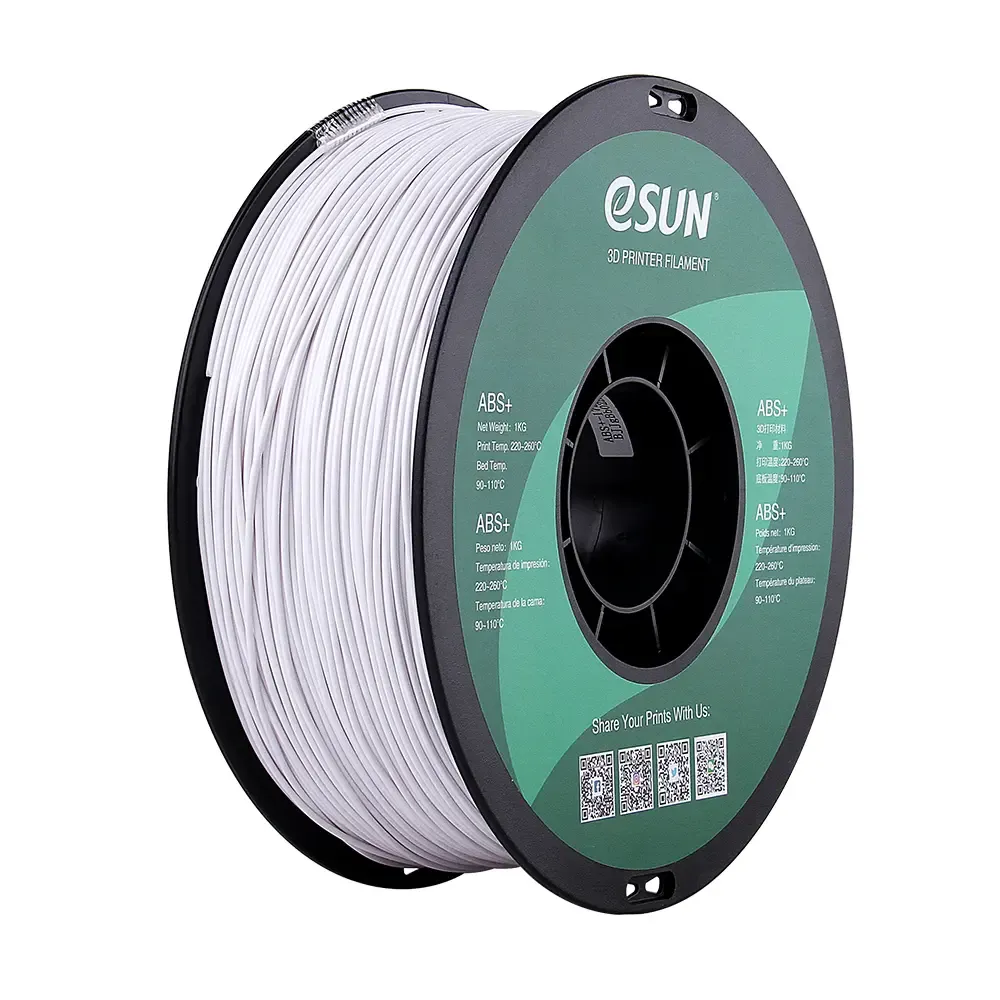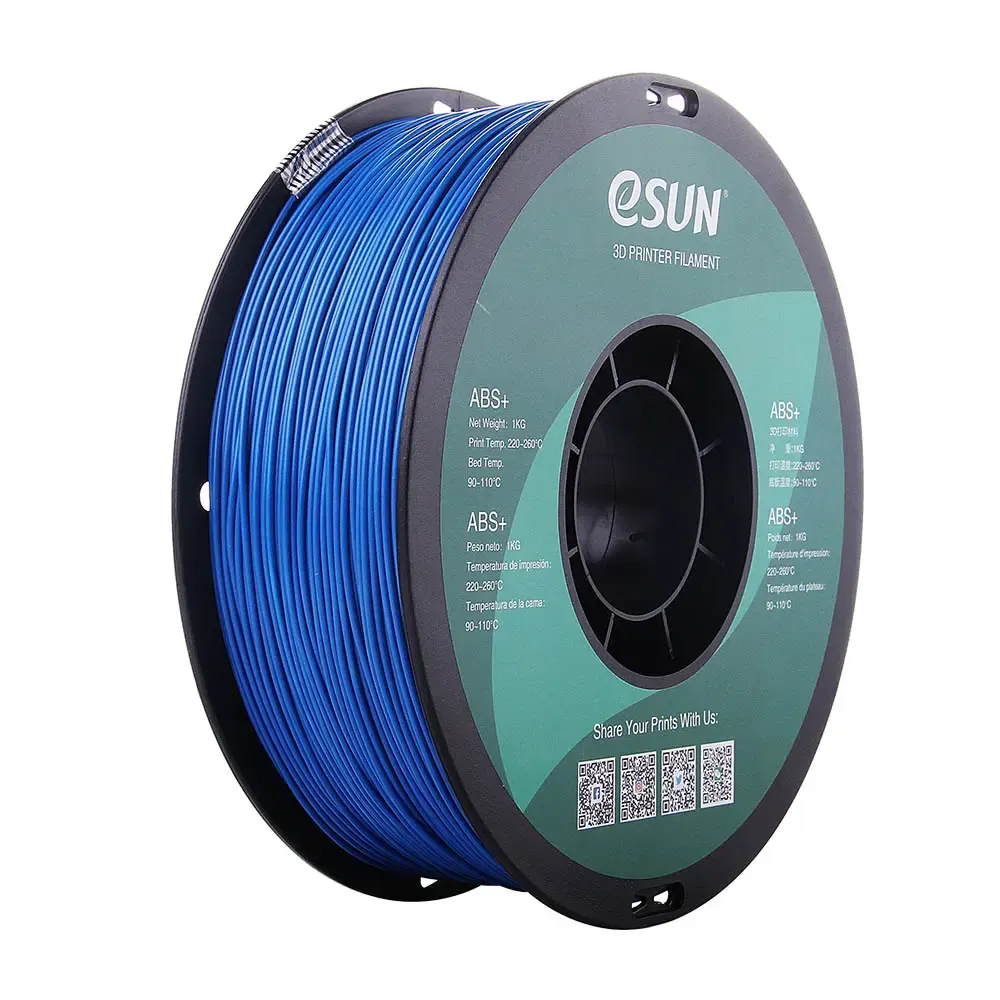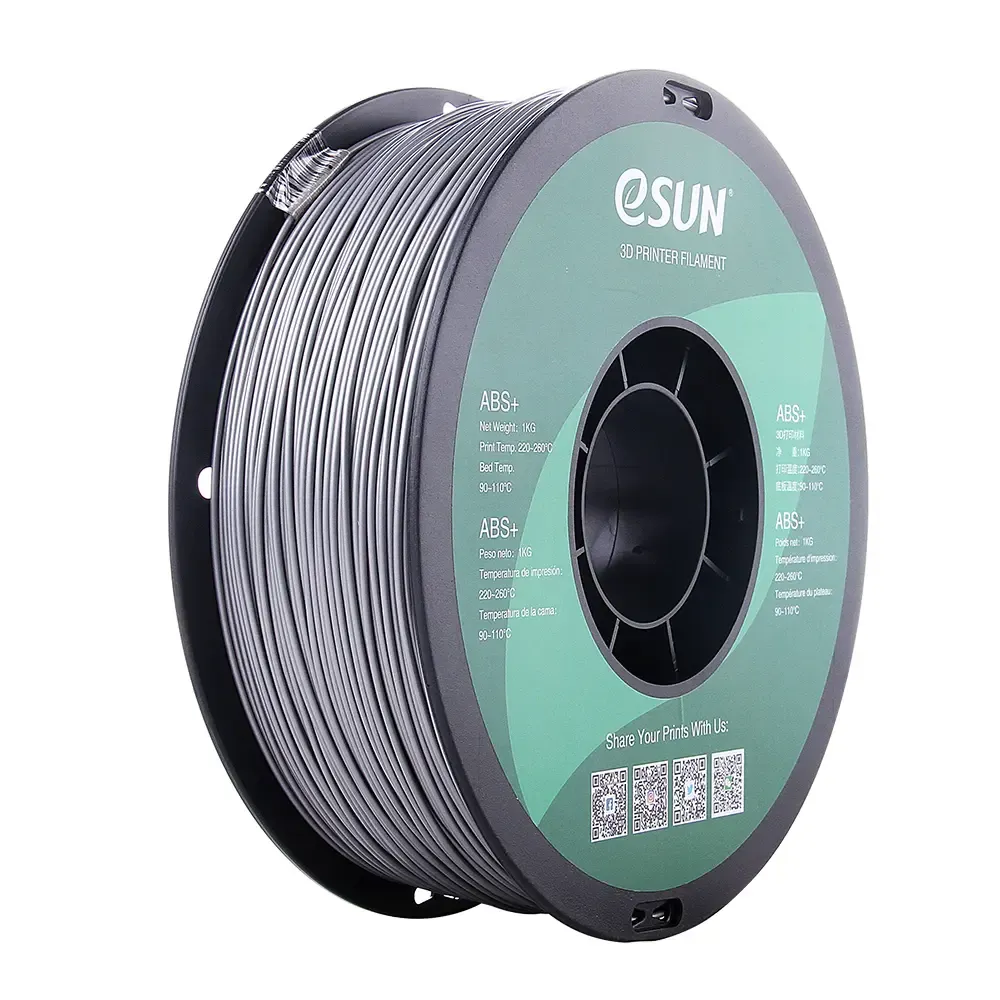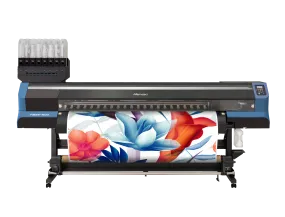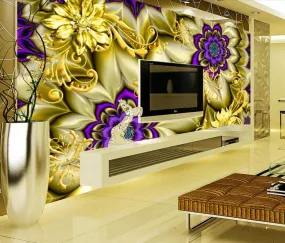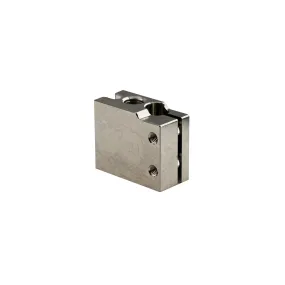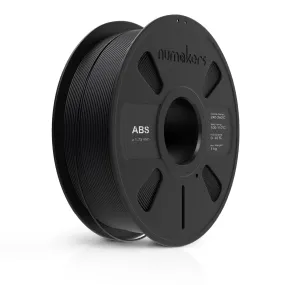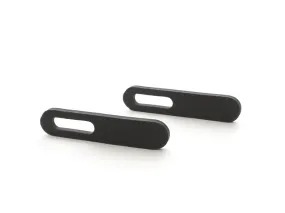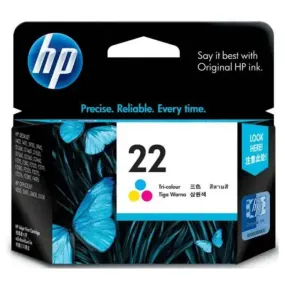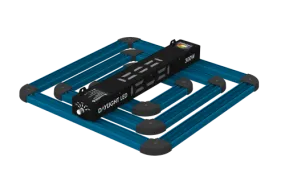ABS is a very familiar material to Engineers and professionals. While it is truly proven material in everyday objects, it should be considered a filament for users at an intermediate or advanced level. This material is suited for users who require durability, medium heat resistance and strength in their prints.
- Nozzle: 220-260C
- Bed: 100-110C
- Feed rate: 30-90mm/s
- Idling speed: 90-150mm/s
For bed adhesion, try the following:
- Glue Stick on Glass bed
ABS is an intermediate material to use on 3D printers—like the Ultimaker—and is a material that has been around since the beginning of desktop 3D printing. ABS is a variation of ABS that provides lower shrinkage and warpage throughout the printing process while maintaining the high temperature and impact resistance that traditional ABS is known for.
Visually, ABS provides a matte-like finish when compared to other 3D printing materials. Furthermore, sharp corners have a more rounded out definition when compared to PETG and PLA. These qualities can result in a high quality look as the matte finish hides print lines (especially in black) and the rounded corners make printed objects look professional. ABS is quite tough, and a part printed solid is similar in strength to an injection molded ABS part.
While the exterior of regular ABS prints can be smoothed via acetone vapors, ABS is more resistant to the smoothing effect of acetone and is not recommended for individuals looking to smooth their parts using this process.
When printing with ABS , we recommend () to help with bed adhesion. Proper ventilation is recommended as well.




